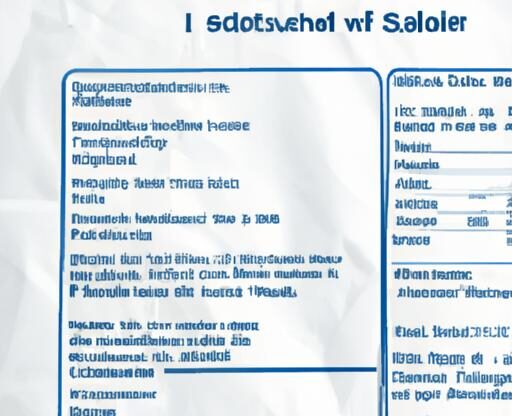Sodium Hydroxide Safety Data Sheet: A Comprehensive Guide
Introduction
When you’re working with chemicals, safety should always be a top priority. But what exactly is a sodium hydroxide safety data sheet, and why is it crucial to have one on hand? Let’s dive into the world of sodium hydroxide safety data sheets and explore the essential information they provide to ensure your well-being in chemical handling.
Sodium hydroxide, also known as caustic soda, is a powerful chemical compound used in various industries for its corrosive properties. A sodium hydroxide safety data sheet is a document that contains detailed information about the chemical identity, composition, hazards, handling procedures, and emergency measures related to sodium hydroxide. It serves as a vital tool in educating individuals on the safe use and storage of this chemical to prevent accidents and protect against potential risks. Let’s uncover why having a sodium hydroxide safety data sheet is a non-negotiable aspect of working with this potent substance.
Composition of Sodium Hydroxide Safety Data Sheet
Information on Chemical Identity and Composition
Within a sodium hydroxide safety data sheet, you’ll discover a wealth of information regarding the chemical identity and composition of this powerful substance. Understanding the precise composition of sodium hydroxide is crucial for ensuring safe handling and storage practices. By delving into the details of its chemical makeup, you gain insight into the potential risks associated with this compound and can take appropriate precautions to mitigate any hazards.
Physical and Chemical Properties of Sodium Hydroxide
Exploring the physical and chemical properties of sodium hydroxide provides valuable insights into how this compound behaves under different conditions. From its appearance and odor to its solubility and reactivity, a sodium hydroxide safety data sheet outlines the fundamental characteristics that define this chemical. By grasping these properties, you can anticipate how sodium hydroxide may interact with other substances and environments, allowing you to make informed decisions when working with this potent compound.
Hazards Identification Section
One of the most critical aspects of a sodium hydroxide safety data sheet is the hazards identification section. This segment highlights the potential dangers associated with sodium hydroxide exposure, ingestion, or inhalation. By comprehensively outlining the risks involved in handling this chemical, the hazards identification section equips you with the knowledge needed to implement robust safety measures and respond effectively in case of emergencies. Understanding these hazards is paramount to safeguarding yourself and others while working with sodium hydroxide.
Handling and Storage Guidelines
Proper Handling Procedures for Sodium Hydroxide
When it comes to handling sodium hydroxide, precision and caution are paramount. This potent chemical compound requires specific procedures to ensure safe usage. Always wear appropriate personal protective equipment, such as gloves, goggles, and a lab coat, when working with sodium hydroxide. Avoid direct skin contact and inhalation of fumes by handling the chemical in a well-ventilated area.
Storage Requirements for Sodium Hydroxide
Proper storage of sodium hydroxide is crucial to prevent accidents and maintain its integrity. Store sodium hydroxide in a cool, dry, well-ventilated area away from incompatible materials. Keep the chemical tightly sealed in its original container and away from sources of heat or ignition. Additionally, ensure that the storage area is clearly labeled and accessible only to authorized personnel to minimize the risk of unauthorized exposure.
Safety Precautions to Prevent Accidents
To mitigate the risk of accidents when working with sodium hydroxide, it is essential to adhere to safety precautions diligently. Avoid mixing sodium hydroxide with incompatible substances, as it can lead to hazardous reactions. In case of a spill, promptly contain and neutralize the chemical following established protocols. Regularly inspect storage containers for leaks or damage and promptly address any issues to maintain a safe working environment. By following these guidelines and remaining vigilant, you can ensure safe handling and storage of sodium hydroxide in your workplace.
Emergency Measures
Steps to Take in Case of Exposure to Sodium Hydroxide
In the event of exposure to sodium hydroxide, swift action is crucial to minimize potential harm. If skin contact occurs, immediately rinse the affected area with plenty of water for at least 15 minutes. Remove any contaminated clothing and seek medical attention promptly. For eye exposure, flush the eyes with water for at least 15 minutes while holding the eyelids open. Contact a healthcare professional or visit the nearest medical facility for further evaluation and treatment.
First Aid Measures for Sodium Hydroxide Exposure
When providing first aid for sodium hydroxide exposure, it is essential to prioritize safety and follow proper procedures. If ingested, do not induce vomiting unless instructed by a healthcare provider. Give the affected individual water or milk to drink to help dilute the chemical. In cases of inhalation, move the person to fresh air and monitor their breathing. Seek medical assistance immediately to assess the extent of exposure and administer appropriate treatment.
Emergency Contact Information for Immediate Assistance
In emergencies involving sodium hydroxide exposure, having quick access to relevant contact information can make a significant difference in ensuring a swift response. Keep emergency contact numbers for poison control centers, medical facilities, and local authorities readily available. Be prepared to provide specific details about the exposure and follow the guidance of healthcare professionals or emergency responders to address the situation effectively. Remember, prioritizing safety and taking prompt action in emergencies can help mitigate risks and protect against potential harm from sodium hydroxide exposure.
Regulatory Compliance
Overview of Regulations and Guidelines
Ensuring compliance with regulations and guidelines is paramount when it comes to sodium hydroxide safety data sheets. Various regulatory bodies, such as OSHA (Occupational Safety and Health Administration) and the EPA (Environmental Protection Agency), have established specific requirements for handling and documenting chemicals like sodium hydroxide. These regulations outline the necessary information to include in safety data sheets, ensuring that individuals are well-informed about the potential hazards and proper handling procedures associated with sodium hydroxide.
Importance of Complying with Regulatory Requirements
Compliance with regulatory requirements not only safeguards the well-being of individuals working with sodium hydroxide but also upholds legal standards and ethical responsibilities. By following the guidelines set forth by regulatory agencies, companies demonstrate their commitment to employee safety and environmental protection. Adhering to these regulations fosters a culture of accountability and responsibility in chemical management practices, ultimately reducing the likelihood of accidents and ensuring a safe working environment for all.
Consequences of Non-Compliance
Failure to comply with regulatory requirements regarding sodium hydroxide safety data sheets can have severe consequences. Non-compliance may result in fines, legal penalties, reputational damage, and, most importantly, potential harm to individuals and the environment. By neglecting to adhere to these regulations, companies not only put their employees at risk but also jeopardize the integrity of their operations. It is crucial to prioritize regulatory compliance to mitigate risks and uphold the highest standards of safety in chemical handling.
Conclusion
In conclusion, the importance of a sodium hydroxide safety data sheet cannot be overstated when it comes to ensuring your safety and well-being while handling this potent chemical compound. By providing crucial information on composition, hazards, handling guidelines, and emergency measures, a safety data sheet serves as a valuable resource in safeguarding against potential risks and accidents.
Remember, safety should always come first when working with chemicals like sodium hydroxide. By understanding and following the guidelines outlined in the safety data sheet, you can minimize the risks associated with handling this corrosive substance and create a secure environment for yourself and those around you. So, make sure to familiarize yourself with the information provided in the sodium hydroxide safety data sheet and prioritize safety in all your chemical-related endeavors. Stay safe, stay informed, and always keep your sodium hydroxide safety data sheet close at hand.





